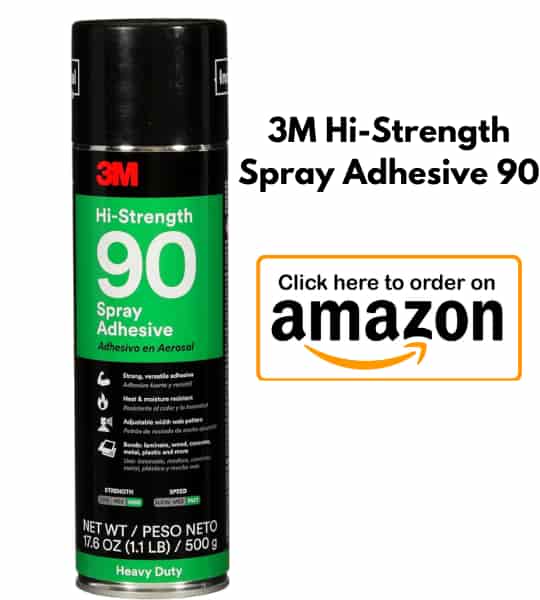Spray painting plastic can be tricky, often resulting in a sticky finish. This common issue occurs when paint doesn’t cure properly. Proper preparation and curing time are crucial to avoid a tacky surface. Using the right products ensures a smooth, durable finish.
Understanding how to fix and prevent sticky spray paint on plastic can save your project. This guide offers simple steps to rectify and prevent the problem. By following these tips, you can achieve a professional-looking result. Let’s dive into the methods to fix sticky spray paint on plastic effectively.
Causes Of Sticky Spray Paint
Spray painting plastic can be tricky. Sometimes, the paint stays sticky. Understanding the causes helps in fixing it.
Improper Surface Preparation
Plastic surfaces need special care before painting. Skipping surface preparation can cause sticky paint. Here are some common preparation steps:
- Clean the plastic surface thoroughly.
- Use soap and water to remove dirt.
- Dry the surface completely.
- Use sandpaper to roughen the surface.
- Apply a primer designed for plastic.
Skipping any of these steps can result in sticky paint. Proper preparation ensures better paint adhesion.
Humidity And Temperature Factors
Weather conditions affect spray paint drying. High humidity and low temperatures can cause sticky paint. Here’s a quick table to understand the impact:
| Condition | Effect |
|---|---|
| High Humidity | Slower drying, sticky paint |
| Low Temperature | Paint does not dry properly |
| Optimal Condition | Fast and proper drying |
Ideal conditions for spray painting are low humidity and moderate temperatures. Adjust your painting schedule to suit these conditions.
Essential Tools And Materials
Having the right tools and materials ensures a smooth process when fixing sticky spray paint on plastic. This section outlines the essential items needed.
Spray Paint Types
Choosing the correct type of spray paint is crucial for plastic surfaces. Here are some options:
- Acrylic Spray Paint: Dries quickly and provides a smooth finish.
- Enamel Spray Paint: Offers a hard, durable finish.
- Specialty Plastic Spray Paint: Designed specifically for plastic surfaces.
Cleaning Supplies
Proper cleaning supplies are necessary for prepping the surface before painting. Gather the following items:
| Item | Purpose |
|---|---|
| Soap and Water | Removes dirt and grime from the plastic. |
| Rubbing Alcohol | Eliminates oils and residues. |
| Microfiber Cloth | Dries the surface without leaving lint. |
Ensure the plastic is completely dry before applying new paint. Use these cleaning supplies to prepare the surface effectively.
Preparing The Plastic Surface
Getting the plastic surface ready is key to fixing sticky spray paint. Proper preparation ensures the paint adheres well and dries smoothly. Let’s dive into the steps for preparing the plastic surface.
Cleaning The Surface
Start by cleaning the plastic surface thoroughly. Dirt and grease can prevent the paint from sticking properly. Use a mixture of warm water and mild soap.
- Get a clean cloth.
- Dip it in the soapy water.
- Wipe the plastic surface.
- Rinse the cloth with clean water.
- Wipe the surface again to remove soap residue.
After cleaning, let the surface dry completely. Any moisture left can affect the paint adhesion.
Sanding Techniques
Sanding the plastic surface helps the paint stick better. Use fine-grit sandpaper for this task.
- Choose 400-600 grit sandpaper.
- Gently sand the plastic surface.
- Sand in circular motions for even coverage.
- Remove any sanding dust with a clean cloth.
After sanding, the surface should feel slightly rough. This texture helps the paint adhere better.

Applying Primer
Applying primer is the first step to fix sticky spray paint on plastic. Primer helps paint stick better. It also prevents paint from peeling or chipping.
Types Of Primers
There are different types of primers available. Choosing the right one is important. Here are some common types:
| Type of Primer | Best For | Features |
|---|---|---|
| Water-Based Primer | Plastic and wood | Low odor, easy cleanup |
| Oil-Based Primer | Metal and plastic | Strong adhesion, durable |
| Shellac Primer | Plastic, wood, and metal | Fast-drying, stain-blocking |
Application Techniques
Proper application techniques ensure the primer works well. Follow these steps for best results:
- Clean the plastic surface thoroughly. Remove any dirt or grease.
- Lightly sand the surface. This helps the primer stick better.
- Shake the primer can well. This ensures even mixing.
- Hold the can about 12 inches from the surface.
- Spray in a sweeping motion. Do not focus on one spot.
- Apply a thin, even coat. Let it dry completely.
- Apply a second coat if needed. Ensure the first coat is fully dry.
By following these steps, the primer will bond well. This creates a smooth base for the paint. Fixing sticky spray paint on plastic becomes easier.
Correct Spray Painting Techniques
Fixing sticky spray paint on plastic starts with the right techniques. Proper techniques ensure a smooth, durable finish. Follow these steps for the best results.
Distance And Angle
Maintain the correct distance from the surface. Keep the spray can 8-12 inches away. This prevents paint buildup and runs.
Hold the can at a consistent angle. Aim for a 45-degree angle to the surface. This ensures even coverage.
Move the spray can in a steady motion. Use a side-to-side sweeping motion. Avoid stopping in one spot to prevent drips.
Layering And Drying Time
Apply paint in thin layers. Thick layers can cause sticky surfaces. Thin layers dry faster and smoother.
Allow proper drying time between layers. Wait at least 20 minutes before applying the next coat. This ensures each layer is dry before adding more.
Use a drying chart for reference:
| Layer | Drying Time |
|---|---|
| First Layer | 20 minutes |
| Second Layer | 20 minutes |
| Third Layer | 30 minutes |
Use a low-humidity environment for drying. High humidity can slow drying times. Ensure the area is well-ventilated.
Following these techniques helps achieve a smooth, non-sticky finish on plastic surfaces.
Troubleshooting Sticky Paint
Spray painting plastic can be tricky. Sometimes, the paint remains sticky. This section helps you troubleshoot and fix sticky spray paint on plastic.
Identifying Common Issues
Sticky paint on plastic can occur for several reasons. Identifying the root cause is key. Here are common issues:
- Humidity: High humidity can slow drying time.
- Thick Coats: Applying thick layers of paint can lead to stickiness.
- Improper Curing: Not allowing enough curing time affects the finish.
- Surface Prep: Not cleaning the plastic surface can cause issues.
Immediate Fixes
If the paint is still sticky, try these immediate fixes:
- Move to a Dry Area: Place the item in a low-humidity area.
- Use a Hairdryer: Set to low heat and gently dry the paint.
- Apply Talcum Powder: Lightly dust to reduce stickiness.
- Thin Coats: Apply thin layers and allow drying between coats.
If these fixes don’t work, consider removing and repainting the surface.
| Issue | Solution |
|---|---|
| Humidity | Move to a dry area |
| Thick Coats | Apply thin layers |
| Improper Curing | Use a hairdryer |
| Surface Prep | Clean the surface |
Fixing sticky spray paint on plastic can be simple. Follow these steps for a smooth finish.
Preventing Future Stickiness
Dealing with sticky spray paint on plastic can be frustrating. Fixing the issue is important, but preventing it in the future is even better. Here are some effective ways to ensure your spray-painted projects remain flawless.
Storage Conditions
Proper storage of spray-painted items is crucial. Always store your projects in a cool, dry place. Avoid areas with high humidity or direct sunlight. Use a well-ventilated space for drying and curing. This helps the paint set properly and prevents stickiness.
Proper Maintenance
Maintaining your spray-painted items keeps them looking fresh. Regularly clean the surface with a soft cloth. Avoid using harsh chemicals or abrasive materials. These can damage the paint and cause stickiness. Use mild soap and water for cleaning, if necessary.
| Action | Frequency | Tools Needed |
|---|---|---|
| Clean with soft cloth | Weekly | Soft Cloth, Mild Soap, Water |
| Inspect for damage | Monthly | Magnifying Glass |
With these tips, your spray-painted plastic items will stay beautiful and non-sticky. Keep them in great shape with the right storage and maintenance.
Expert Tips And Tricks
Fixing sticky spray paint on plastic can be tricky. It’s important to follow the right steps. Expert tips and tricks can save your project. Let’s explore some effective methods.
Pro Recommendations
Professionals have some great advice for this problem:
| Tip | Description |
|---|---|
| Use a Primer | Primer helps paint stick better. |
| Proper Drying Time | Allow each coat to dry fully. |
| Quality Paint | Choose high-quality spray paint for plastic. |
Diy Hacks
Try these simple hacks to fix sticky paint:
- Rubbing Alcohol: Wipe the sticky area with rubbing alcohol.
- Baking Soda: Sprinkle baking soda on the sticky paint.
- Baby Powder: Dust baby powder to absorb the stickiness.
These DIY hacks are easy and effective. They can help you fix the problem quickly.
Frequently Asked Questions
Why Is My Spray Paint Sticky On Plastic?
Sticky spray paint on plastic is often due to improper curing. Ensure the paint is suitable for plastic and follow drying times.
How Long Does Spray Paint Take To Dry On Plastic?
Spray paint typically takes 24 hours to dry on plastic. However, it may take longer in humid conditions.
Can I Fix Sticky Spray Paint On Plastic?
Yes, you can fix sticky spray paint. Lightly sand the surface and apply a clear coat to finish.
What Causes Spray Paint To Remain Tacky?
Tacky spray paint can result from high humidity, thick layers, or using the wrong type of paint for plastic.
Final Verdict
Fixing sticky spray paint on plastic can be easy with the right steps. Clean the surface thoroughly. Use a primer designed for plastic. Apply thin, even coats of spray paint. Allow adequate drying time between layers. These simple tips ensure a smooth, long-lasting finish for your plastic items.
Happy painting!

